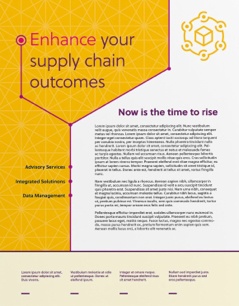 An increasing number of companies are investing in cloud-based digital technologies to drive cost savings and efficiencies across multiple areas of business. It’s estimated that by 2020, 60-70% of all software, services and technology spending will be cloud-based.[i] Spend management leaders are following suit and exploring cloud spend management solutions in an effort to improve both spend control and visibility.
An increasing number of companies are investing in cloud-based digital technologies to drive cost savings and efficiencies across multiple areas of business. It’s estimated that by 2020, 60-70% of all software, services and technology spending will be cloud-based.[i] Spend management leaders are following suit and exploring cloud spend management solutions in an effort to improve both spend control and visibility.
Choosing the right cloud-based spend management solution for your organization can be challenging, but also very beneficial once the tool has been implemented. However, implementation is a complex process in itself, with many important steps to take before the new system is in place. Supplier enablement is an especially critical part of successfully implementing a new cloud system, making the supplier onboarding process especially important.
Below are five important things you’ll want to consider during supplier onboarding of your next cloud spend management implementation.
1. Choosing your players
First, you’ll need to choose which suppliers you’d like to bring to your new spend management system. To do so, you will need to develop criteria for how you will decide. Once you know which rules need to be applied to begin building your list, you can begin the supplier selection process. To avoid complications, you will want to know the full list of suppliers before beginning the implementation.
2. Organizing the list
Once you have the list of suppliers that you’d like to bring to the spend management system, you’ll need to ensure that all of your supplier contact information is up-to-date. While this process can be time-consuming, it’s crucial that you begin with an updated supplier database.
You should also strategically segment suppliers based on things like volume and spend. For example, a high volume segment would use large catalogs, EDI, cXML and other complex integrations. A low volume segment would use supplier portals and emails.
3. Crafting the messaging
The success of your spend management implementation greatly depends on how well you communicate the changes to your suppliers. Create a detailed communications plan that includes messaging before, during and after the implementation of your new cloud system. Your messages should build a sense of urgency and excitement about the implementation, as you’ll want suppliers to get on board with the change as quickly as possible.
To incentivize suppliers to adopt the new system, your messaging should clearly state how it’s beneficial to them. Will it mean faster payment? Will it save them time? Sharing the value proposition will help encourage suppliers to actively participate in the onboarding process. Your messaging should also be targeted and uniquely tailored to each supplier segment, as this will also help encourage adoption.
4. Defining the responsibilities
Once you have a communications plan in place, it’s necessary that you determine who is responsible for what during the implementation stage. How will the tasks be divided between you, your implementation partner, suppliers and the software provider? What are the project deadlines? Because supplier onboarding is such a vital part of implementation, it’s important that you clearly outline each stage of the process. This will hold all parties accountable, including your suppliers, and avoid unwelcome surprises or project launch delays.
5. Developing a long-term plan
It’s important to remember that this isn’t just a “one-and-done” implementation exercise. To achieve your desired results, you’ll need to develop a long-term plan with your implementation partner and dedicate resources to managing the spend management solution after it’s implemented.
There are many things to consider to ensure success when onboarding your suppliers to a new system. If you’re looking to migrate to a cloud-based spend management system but need help getting started, contact RiseNow for a supply chain consultation.







Comments